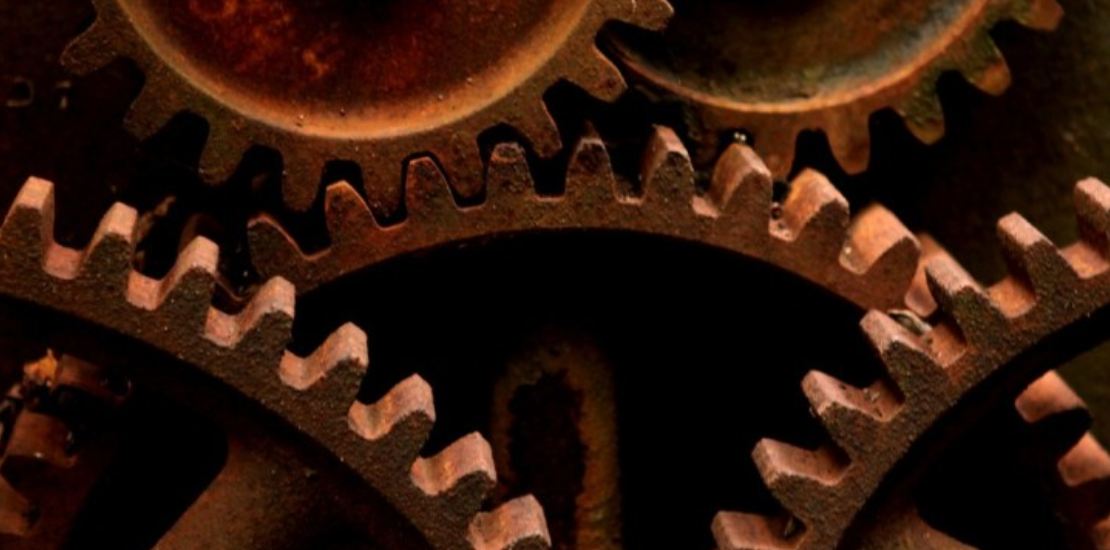Gears continue to be an integral part of any machine we use in our daily lives. From food-processors to washing machines at home to any and every conceivable automotive under the sea or up in the air, we need gears to make the main powering device (it could be an electric motor, an internal combustion engine, a jet engine or even a nuclear-powered reactor) function to its optimum capacities, and reduce or increase speed are required stages.
If you think gears are a recent phenomenon, you would be surprised to note that archaeology pins it close to 2200 years back with the first purposefully built gears supporting time-deriving devices that purportedly was built by none other than Greek thinker-mathematician-inventor Archimedes! It’s other uses then were for running water mills and moving heavy horse/ animal driven loads. Down into medieval times, it was used to move goods, indicate time (remember Big Ben of London!), turn wheels to pull water from wells, and most of all, helped blow forts, castles and fortifications to smithereens with siege catapults and trebuchets.
In its earliest avatars, gears were made of wooden cogs which stuck out at regular intervals from a circular wheel. The cogs would protrude either outwards or side-wards so as to be able to touch and move (or be moved by) other objects. In these forms, they also moved massive stones, boulders and logs across vast distances. It was not until the 1800s that gears as a concept and facilitator device, come out into its own. What brought this change then on, is rather easy to note! AUTOMOTIVES, and add to that the industrial revolution especially in Great Britain where every machine built in those days had to have gears to make it efficient, both to do the job, and do it with just the right kind or resources.
Built in various shapes and forms, the truly successful model which can be called an automobile even by today’s exacting standards was the one built by Karl Benz in 1885 in Mannheim, Germany. This one invention practically opened the flood-gates to one of life’s luxuries which over the centuries is today worth a multi-trillion USD industry! At the centre of the efficient functioning of any automotive, be it road-based, rail-based, sea or air-based in the efficient functioning of the gears to transfer power from the engine or to either speed up things or reduce it to slow down the vehicle/ machine. In the functioning of automobiles, this has been of particular importance and is the single-most reason behind its astronomical growth.
Along with the sheer numbers, the automobile industry has also spawned the need for a variety of gears including internal and external gears, rack and pinion gears, spurs, helical & double helical gears, bevel gears, hypoid, crown, worm gears to name some. What started as a simple way to assist the IC engines perform efficiently is today a mainstay, the quality of which is what keeps the industry in the red. Gears, if correctly designed and produced of the right quality, helps transmit power efficiently. This helps reduce maintenance costs and helps derive maximum mileage per litre of feedstock/ fuel. IC engines being a cost centre, good gears help increase ROIs and aid in quicker recovery of investments.
Contrary to that, gears which do not make the mark may result in fatal accidents, increased fuel consumption, waste and all manner of ecological issues, not to mention inflated costs of operations and the likelihood of legal sanctions and monetary damages being ruled against the automotive/ engine makers which invariably boil down to the actual gear maker(s).
The above scenario thus makes it rather obvious as to why quality inspection plays such an important role in the manufacture of gears, both automotive and otherwise.
At the moment, Gear Manufacturers employ two ways of inspecting gears.
1. PDI. Short for pre-delivery inspection, as the name suggests, this is a 100% check of every manufactured item which when it leaves the plant is to go to the intended client who could be an automotive maker or maker of IC engines or a similar application to be part of a larger system or machinery. The exclusive and predominant use of PDI is to stop the shipment of any likely defective output which does not conform to stated parameters which becomes apparent upon being inspected either against established criterion or against visual/ mechanized inspection. The outcome of this inspection is to weed out parts which do not conform, and where need be, take it back through the process and have the same rectified to fit into set parameters for further shipment to the intended client. Where the same is not possible given the nature of deviations, the part is either destroyed or treated as scrap and taken out of the system permanently.
2. In-process inspection. As against targeting the output which the PDI does, the in-process inspection aims to identify areas which generate deviations and try and fix them at their very origin so that deviations do not arise. Samples are taken out (at the desired frequency) on and inspected to know if there are any deviations. The intention behind IP inspection is to know the status and condition of the machines and processes and identify gaps to plug. It ensures the setting of the gear manufacturing machine is right.
Till a while back, both these inspections were carried out on machines which were a mix of manual and automated systems wherein the inspection required a human presence to gauge and record the readings. Due to its inherent nature, this manner of inspection was slow, likely to miss very minute variances and could not produce the kind of output reports necessary to bring about quick and effective changes. Due to their reliance on the human element, output besides being slow would sometimes be zero where the operator was not available. It also took considerable space given that the human operator has to move between various gauges and tables, and could not be moved from one place to another either on a given shop-floor or anywhere else.
The latest line of inspection methodologies being introduced in the industry takes care of the above difficulties by the extensive use of digitization and computers, with systems being built in such a way that the machine itself takes care of moving samples between gauges to read and record variances. Being system-based, and in the absence of an active human operator, the machine is highly efficient in accomplishing its objectives, records information in real-time with high accuracy, and can generate a variety of customized reports for varying levels of management to understand critical areas of operations.
Going forward, and with the surety of introduction of machines which think and react like humans, tech platforms including AI, big data, 5G, IoT and edge computing are likely bringing unthinkable changes in the way we shall conduct the inspection. In particular, the following would be of immense interest:
1. IoT-enabled machines which self-inspect and correct variances.
With IoT, machines will ‘talk’ between themselves and discover the reason behind variances. These can then be either reduced or reported to the human element in the system who can take the final call. Going beyond, with the use of edge computing, even the smallest elements in the production cycles which remain at the fringes of system would ‘speak’ and compute between themselves and find solutions or report the issues. This shall reduce the need for inspections at the end of the system with constant in-process inspection being the norm.
2. AI and big-data.
AI coming very close to the way humans think, and think fast. With humongous facts fed into computers, AI can play the role of the humans- without all the negatives of being human! It can read reports for itself and decide what changes ought to be made to the machines in the light of existing circumstances so that the output is exactly as desired. This will not only cut time drastically but also reduce wastages of every kind.
3. Presence of 5G.
The defining feature of 5G mobile networks would be the shocking speeds of connectivity (20 GB plus in most cases, as compared to the 5 GB with 4G) which would increase the reach of the management to inspect output and systems in reality with zero latency. Essentially what this means is that the human element would be informed of everything on the shop floor 24 x 7 x 365 at any place with a reasonably functional 5G connection! Decisions based on 24 hours inspection would be way, way different from the present where decisions are based on results of batches of output. It would be fast, decisive and would save substantial resources for organizations making products and parts cheaper.
4. Augmented reality or AR to aid inspection!
Using simulation software and information from IoT-assisted machines, a virtual 3D model of the gear-making machines can be made (a Digital Twin). This AR model shall then be made to go through a range of simulated situations and its output recorded to know exactly where variances take place. A kind of data fusion, information from machines using IoT along with hi-tech software shall give 100% accurate details.
The essence of all that which comes across in the above points is that quality inspection shall henceforth be an integral part of the production with real-time data being generated and decisions taken just as fast. The nearest example of this phenomenon could be that of a vehicle’s speedometer which helps us get off the gas in real-time instead of waiting for an eventuality to take place, and then taking a decision!


